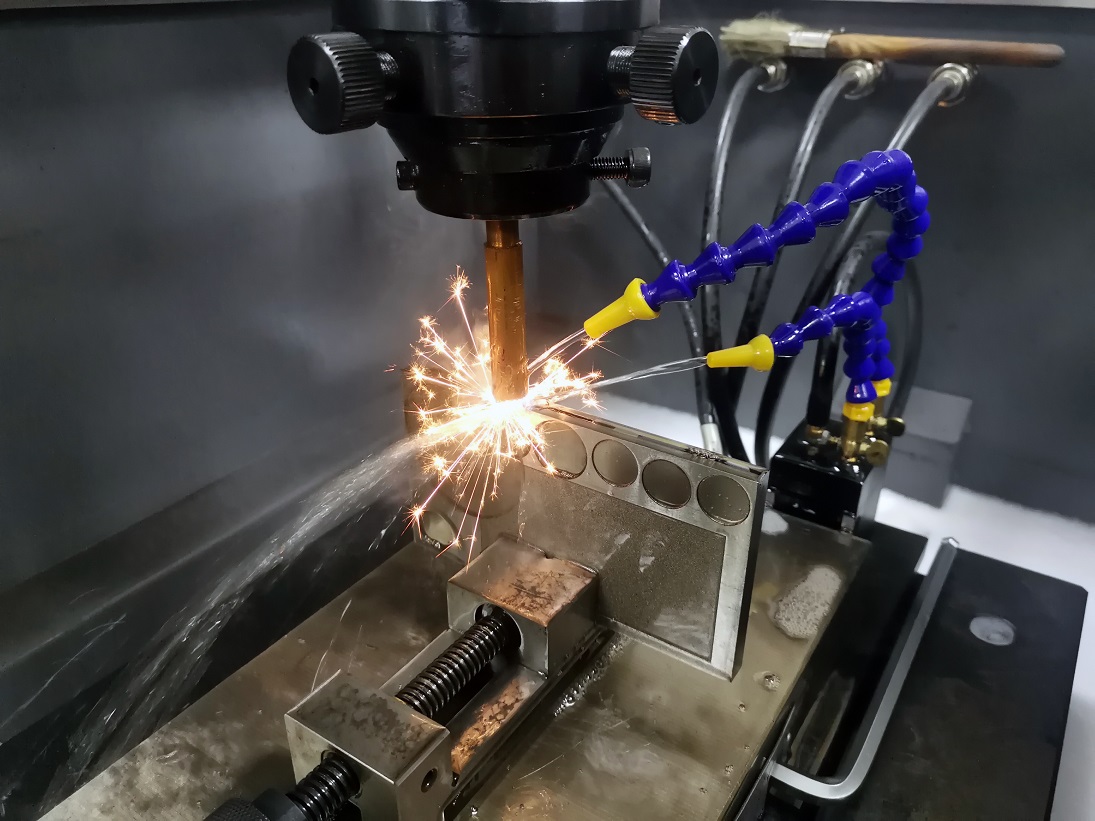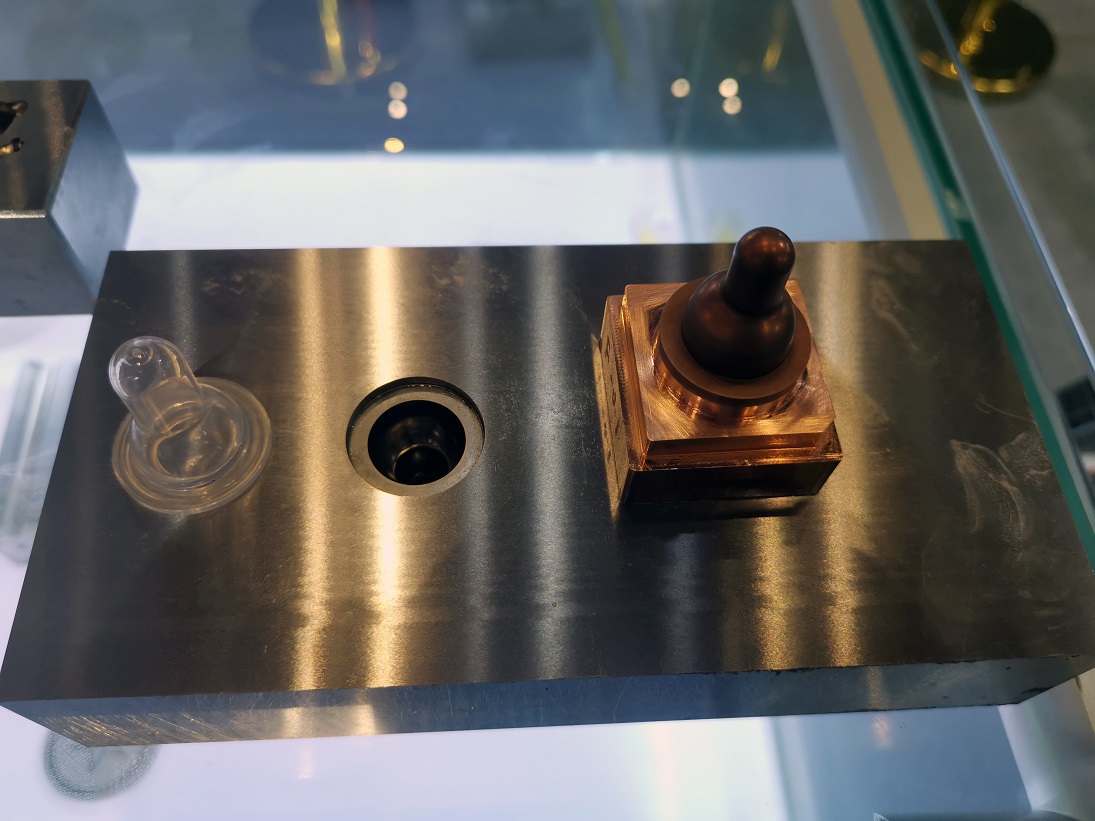+86-13914052243

EDM molding is the process of continuously removing metal by electrical discharge. Although the time of a pulse discharge is short, it is a complex process due to the combined effects of electromagnetism, thermodynamics and fluid mechanics. To sum up, the process of a pulse discharge can be divided into the following stages:
When the pulse voltage is applied between the tool electrode and the workpiece, an electric field is formed between the two electrodes immediately. The electric field strength is proportional to the voltage and inversely proportional to the distance. With the increase of the voltage between the electrodes or the decrease of the distance between the electrodes, the electric field strength between the electrodes will also increase. Since the microscopic surfaces of the tool electrode and the workpiece are uneven and the distance between the electrodes is small, the electric field intensity between the electrodes is very uneven, and the electric field intensity at the protruding point or tip that is closest to the two electrodes is generally the largest. When the electric field strength increases to a certain amount, the dielectric is broken down, the discharge gap resistance rapidly decreases from the insulating state to a fraction of an ohm, and the gap current rapidly rises to a maximum value. Due to the small diameter of the channel, the current density in the channel is high. The gap voltage drops rapidly from the breakdown voltage to the spark sustaining voltage, and the current rises from 0 to a certain peak current.
Once the medium between the electrodes of the spark is ionized and broken down to form a discharge channel, the pulsed power supply makes the electrons between the channels run to the positive electrode at a high speed, and the positive ions run to the negative electrode. Electrical energy becomes kinetic energy, and kinetic energy is converted into heat energy through collision. Therefore, the surfaces of the positive electrode and the negative electrode in the channel become an instantaneous heat source, respectively, reaching a higher temperature. The high temperature of the channel vaporizes the working fluid medium, and then the thermal cracking decomposes and vaporizes it. These vaporized working fluids and metal vapors suddenly increase in volume, become bubbles in the discharge gap, rapidly thermally expand and have the characteristics of explosion. Observing the EDM process, it can be seen that bubbles emerge from the discharge gap, the working fluid gradually turns black, and a slight and crisp explosion sound is heard. EDM spark mainly relies on thermal expansion and local micro-explosion, so that the molten and vaporized electrode material is thrown out and corroded.
The instantaneous high temperature of the discharge point on the surface of the channel and the positive and negative electrodes causes the vaporization of the working fluid and the melting and vaporization of the metal material, and the thermal expansion generates a high instantaneous pressure. The pressure in the center of the channel is the highest, so that the vaporized gas expands continuously outward, and the molten metal liquid and steam at the high pressure are pushed out and thrown into the working fluid. Due to the action of surface tension and cohesion, the thrown material has the smallest surface area, and condenses into fine spherical particles when condensed. When the molten and vaporized metal is thrown away from the surface of the electrode, it splashes everywhere. Except most of it is thrown into the working fluid and shrinks into small particles, a small part of it is splashed, plated and adsorbed on the opposite electrode surface. This phenomenon of mutual splashing, plating and adsorption can be used to reduce or compensate for the loss of tool electrodes during processing under certain conditions.
With the end of the pulse voltage, the pulse current also rapidly drops to zero, but there should still be an interval after that to deionize the interstitial medium, that is, the charged particles in the discharge channel recombine into neutral particles, and the medium at the discharge channel is restored. In order to avoid arc discharge caused by repeated discharge in the same place next time, the next breakdown discharge channel can be formed at the nearest place between the two poles or at the place with the smallest resistivity.
It can be seen that in order to ensure that the EDM molding process is carried out normally, there should generally be sufficient pulse interval time between two pulse discharges. In addition, there should be room for the breakdown and discharge points to disperse and transfer, otherwise only discharge near one point, and it is easy to form an arc.
https://admin.yinqingli.com/storage/uploads/video/2021/11/10/rubber-mold-made-by-CNC-EDM-machine.mp4
